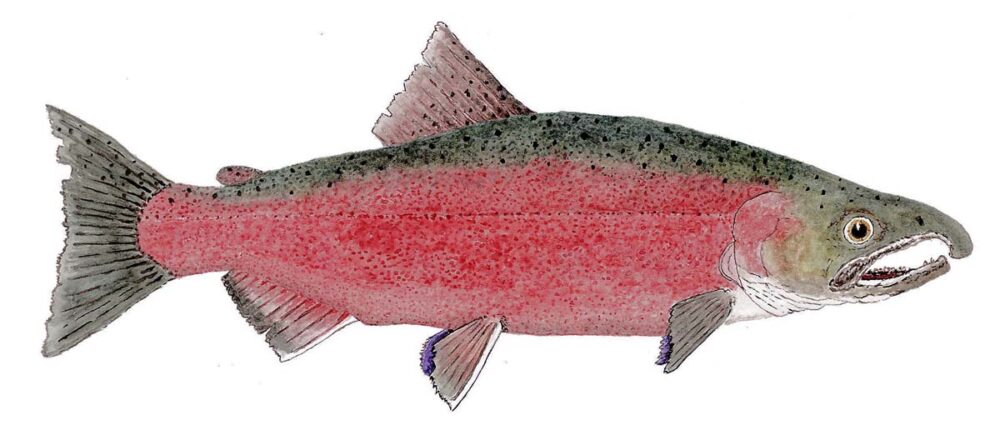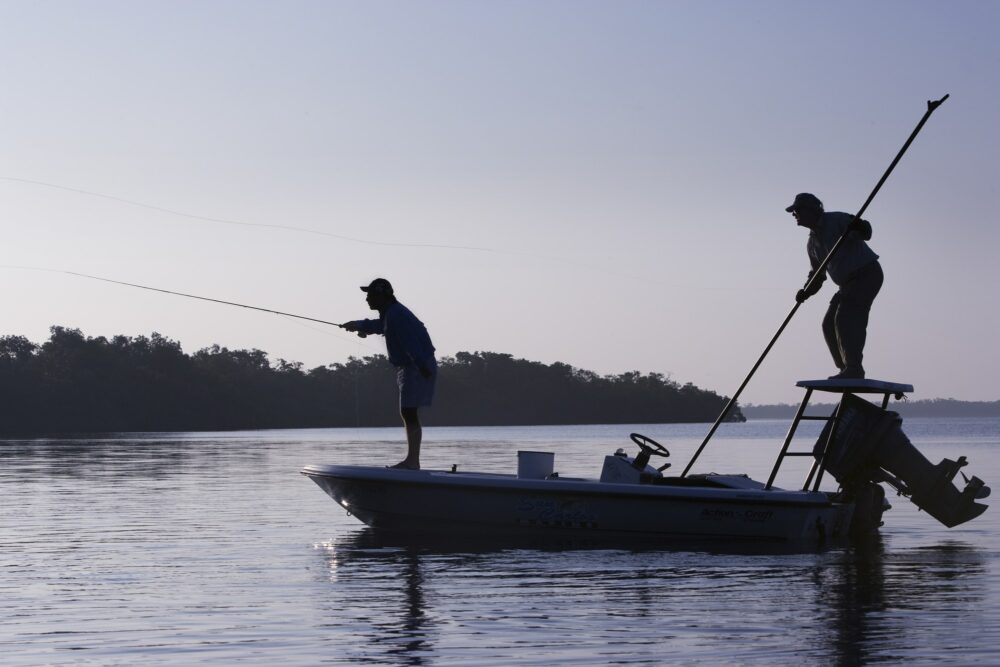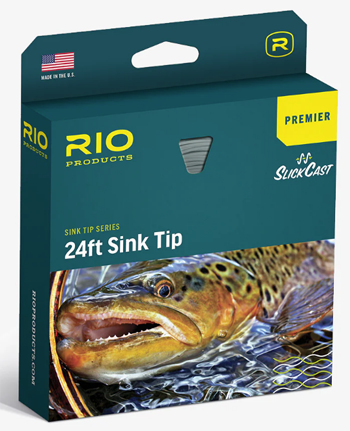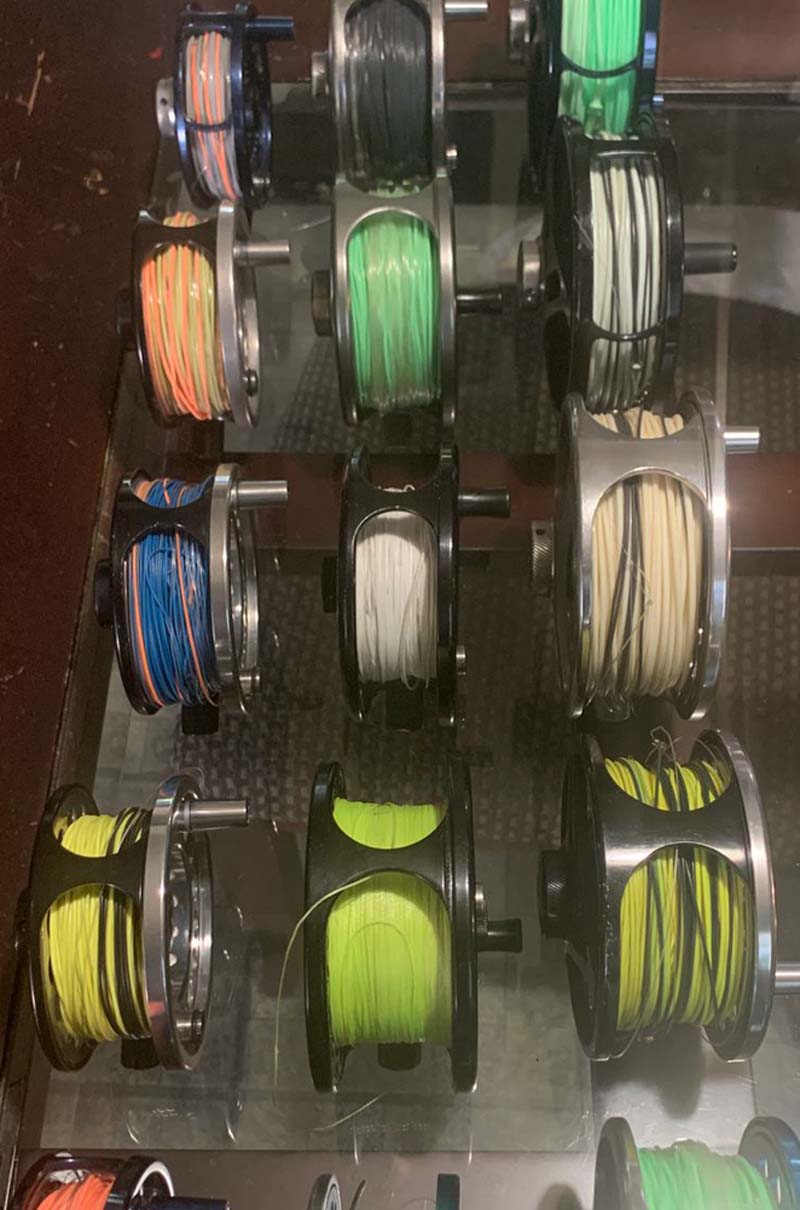Do you need a truck full of fly lines?
 By Skip Clement with Six Travellers Group
By Skip Clement with Six Travellers Group
My mates and I traveled the world with DT fly lines for many years, managing to catch peacock bass, tarpon, bonefish, brook trout, rainbow trout, brown trout, kingies (NZ), kahawai, yellow tail, basses, all the salmons, and more.
Twenty-first-century advertising
Now, fly line advertisements tell us we need several varieties of fly lines to catch trout and anything else that swims a few inches to dozens of feet below the surface. No one could count the fly line design offerings available. Buying all the lines suggested for tropical and cold water venues would probably buy an expensive electric bicycle—too expensive for many.

Coastal cutthroat trout fresh from the ocean. A Thom Glace illustration.
Do we need so many fly lines?
The last of my mates living, and I decided to end the keep up with the Jones’ syndrome years ago. We do not buy all the fly lines that advertise, making us more accurate casters, or get several weighted lines to deliver the goods at the correct depth. Letting variously weighted lines govern perfect fly depth.
But today’s fly lines are so good
Don’t get us wrong—today’s fly lines are much better than yesterday’s—no contest. Getting deep with weighted flies and chopped-off lead lines is no longer fashionable or practical. Trying to cast those power line cables was painful and dangerous. Some of us got hit in the head with a fly tied to a lead line, and blood flowed. Instead, we decided that the fastest sink-rated fly line better present flies without a bent line, making jigging more productive.

Male coho salmon spawning colors. Illustration by award winning watercolorist Thom Glace.
The trick is obvious. It’s all about retrieve
Except for needing sinking lines relevant to rod weight (e.g., twelve-weight versus five-weight), we only needed one sinking line for a range of fly rod weights. Most of us chose the heaviest sinker [as mentioned above] for offshore big game like kingfish, and some of our group liked the heaviest for everything, including tarpon to panfish.
Retrieval speed can govern depth
The simple fact is that a full sinking line better presents the fly level, not dragged at a bowed angle, which generally gets rejected and stinks when jigged.
We can present the fly perfectly by managing the retrieval speed. For example, we can cast a 12-weight fast-sinking fly line and retrieve it immediately, after 60 seconds, or at another time limit to keep the fly at the correct depth. To govern the depth, we swim our flies at controlled speeds, not simply by the weight of the fly line. Governing retrieval speed has worked almost perfectly.

A silhouette of a fly fisherman and a guide casting for redfish from a flats boat poling skiff. Envato image.
Huge lake trout
Using tips can also achieve the exact outcome of fly presentation depth. For example, in Great Bear Lake, Canada, huge lake trout in the 20- to 50-pound class can be caught in late June-early July at 40-feet or near shore chasing bait fish in 12-feet or less water. Finding the fish at whatever depth they’re feeding is more easily discovered by ‘searching’ depths with a sink tip than a fast-sinking fly line.
It is not necessary to always match rod weight with line weight
Fly fishing using a max-sink fly line or the added sink tip does not necessarily require using lines that match the rod weight. We have all found that two weights plus or minus one-rod weight are cast manageably enough with a sinking line. We are okay with some ugly casts.
Presentation is important, but if the quarry is 18-feet down, a kerplunk cast will not chase fish; it will more than likely create curiosity, like with dolphins or cobia.

RIO Products image.
Sink tips
Sink tips are efficient for large trout, salmon, largemouth bass, and many others. Again, my friends and I do not stick with matching the rod weight and added tip weight. We have found a tolerance for casting without compromising the presentation, limited to one weight above and one below.
Note: Water hauling is a suggested way to make life easier. Using sink tips or heavy-weighted lines is easy, but a pick-up at full casted length will chase fish away if the water depth is just a few feet. Take your time and pull the line back slowly before hauling a recast.
Being frugal is always a win
Adhering to retrieval rates that put the fly in depth and match the fish’s can limit the number of lines one carries. Then, the fly can be swum or jigged and presented right where it needs to be. Also, fewer lines mean less money spent and less need for additional fly reels and spare spools.
Note 2: Weighted lines are a dream recast using a simple spey-like roll cast. Thus, never worry about the rock wall or forest behind you waiting to eat your fly.








